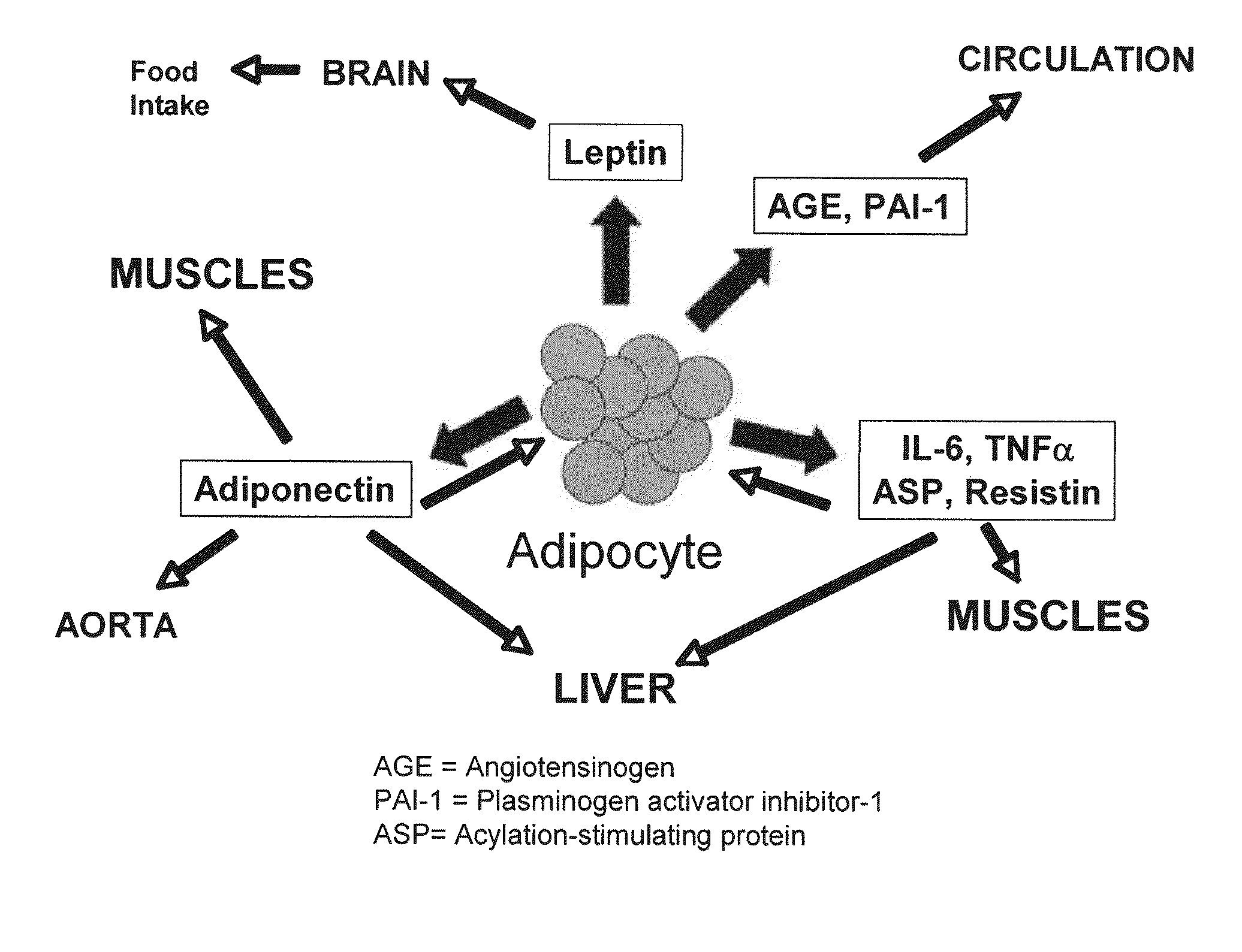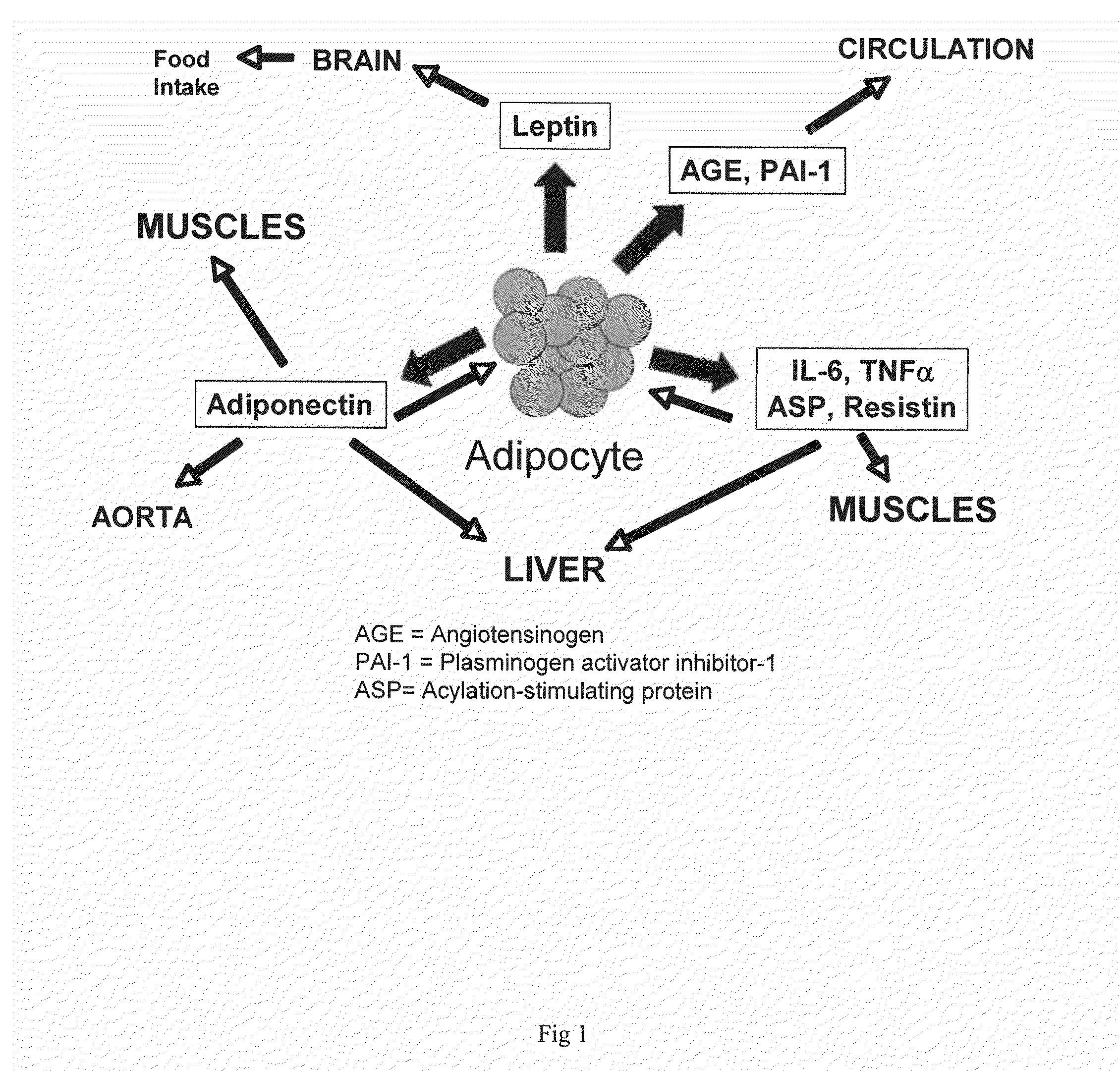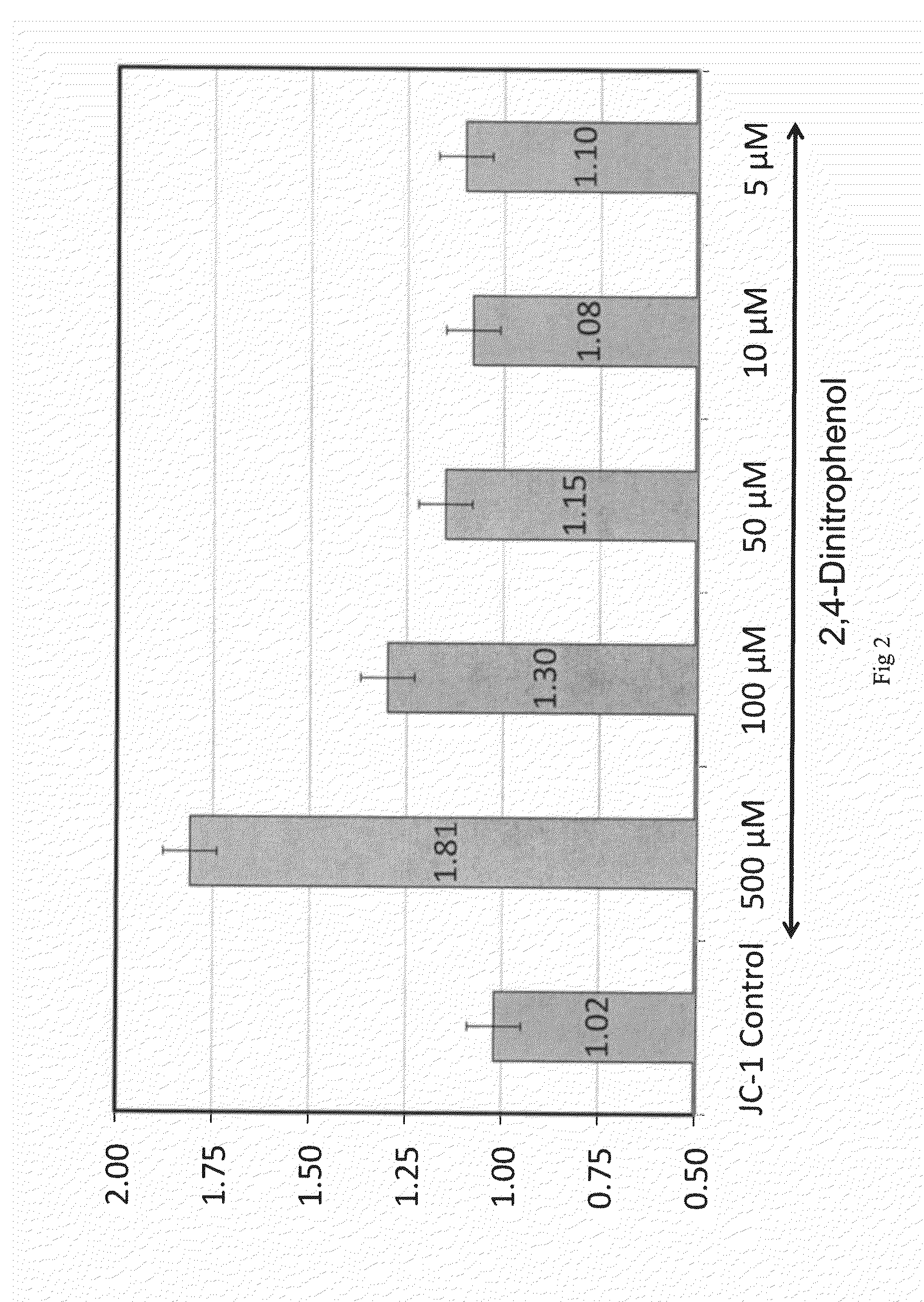Novel mitochondrial uncoupling methods and compositions for enhancing adipocyte thermogenesis
a mitochondrial uncoupling and composition technology, applied in the field of mitochondrial uncoupling methods and compositions for enhancing adipocyte thermogenesis, can solve the problems of lack of selectivity of previous compounds, retention of lipids in fat cells, and largely unsuccessful to date, so as to improve physical performance, increase muscle mass, and facilitate weight loss.
- Summary
- Abstract
- Description
- Claims
- Application Information
AI Technical Summary
Benefits of technology
Problems solved by technology
Method used
Image
Examples
example 1
2,4-Dinitrophenol Uncouples Mitochondrial Membrane Potential in 3T3-L1 Adipocytes
[0081]Objective—The objective of this experiment was to observe the dose-response effect of the mitochondrial uncoupler DNP on mitochondrial membrane potential in 3T3-L1 adipocytes using the lipophilic cationic dye, 5,5′,6,6′-tetrachloro-1,1′,3,3′-tetraethylbenzimidazolylcarbocyanine iodide (JC-1).
[0082]The Model—The 3T3-L1 murine fibroblast model is commonly used to study the potential effects of compounds on white adipose tissue in vitro. This cell line allows investigation of stimuli and mechanisms that regulate inflammatory mediators of cytokine secretion of the adipocyte. As preadipocytes, 3T3-L1 cells have a fibroblastic appearance. They replicate in culture until they form a confluent monolayer, after which cell-cell contact triggers Go / G1 growth arrest. Terminal differentiation of 3T3-L1 cells to adipocytes depends on proliferation of both pre- and post-confluent preadipocytes. Subsequent stimul...
example 2
Phytochemicals and Botanical Extracts can Uncouple Mitochondrial Membrane Potential in 3T3-L1 Adipocytes
[0089]Objective—The objective of this experiment was to determine whether phytochemicals or botanical extracts can directly reduce mitochondria membrane potential in 3T3-L1 adipocytes in a manner similar to DNP.
[0090]The Model—The 3T3-L1 murine fibroblast model as described in Example 1 was used.
[0091]Cell Culture and Treatment—Cell culture procedures and standard chemicals, methods and statistical procedures used were as noted in Example 1.
[0092]Test Materials—Phytochemicals or botanical extracts as described in Table 1 were used as the test materials and dosed at 25 μg / mL. The Concentration for the positive control DNP was 100 μM (18.4 mg / mL).
TABLE 1Commercial Sources of Test Materials Used in Mitochondrial Uncoupling AssaysTest MaterialCommercial Source6-GingerolSigma, St. Louis, MO7-KetoHumanetics Corp., Eden Prairie, MNAcacia niloticaIndfrag-KDN Vita, Hillsborough, NJAcai 10:...
PUM
| Property | Measurement | Unit |
|---|---|---|
| Fraction | aaaaa | aaaaa |
| Fraction | aaaaa | aaaaa |
| Fraction | aaaaa | aaaaa |
Abstract
Description
Claims
Application Information
 Login to View More
Login to View More - R&D
- Intellectual Property
- Life Sciences
- Materials
- Tech Scout
- Unparalleled Data Quality
- Higher Quality Content
- 60% Fewer Hallucinations
Browse by: Latest US Patents, China's latest patents, Technical Efficacy Thesaurus, Application Domain, Technology Topic, Popular Technical Reports.
© 2025 PatSnap. All rights reserved.Legal|Privacy policy|Modern Slavery Act Transparency Statement|Sitemap|About US| Contact US: help@patsnap.com



